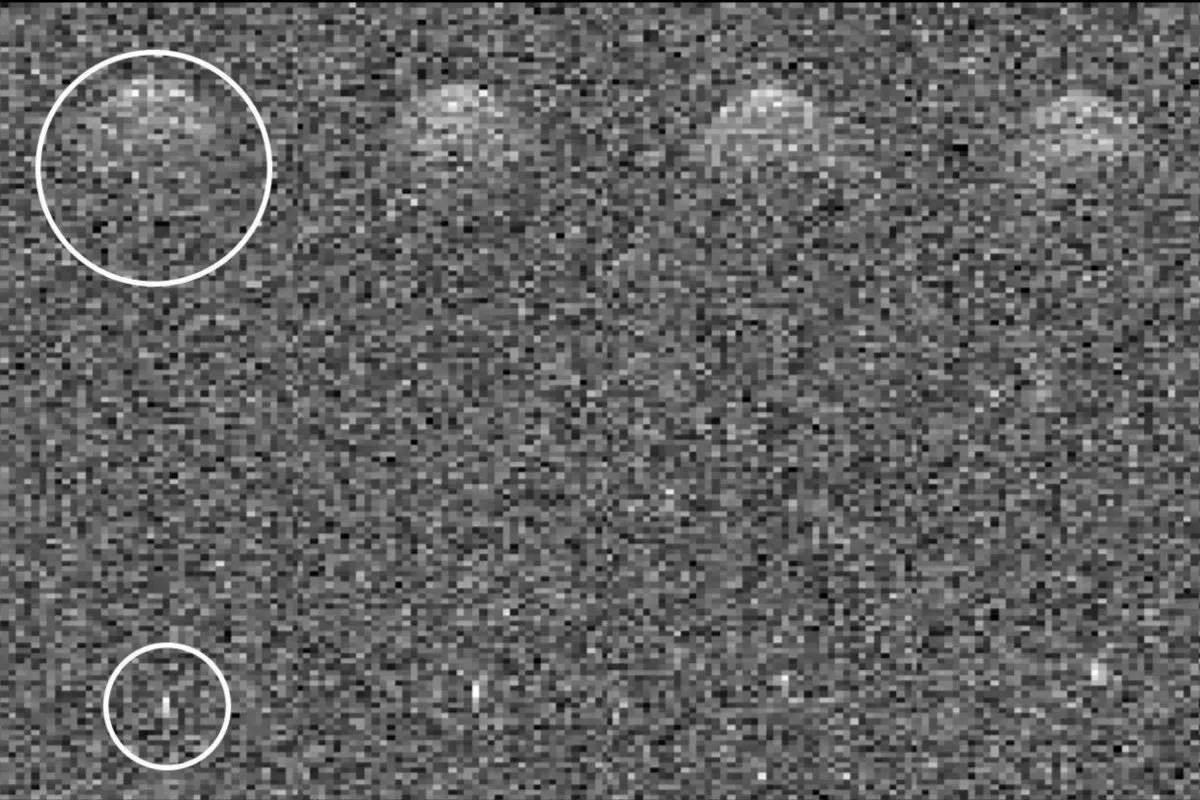NASA has captured photos and videos of two large asteroids that passed by our planet a few weeks ago.
The two asteroids, 2011 UL21 and 2024 MK, passed by Earth on June 27 and 29, respectively, and were captured by NASA’s Goldstone Planetary Radar of the Deep Space Network.
While 2011 UL21 flew past us at a distance of 4.1 million miles — about 17 times farther than the moon — 2024 MK came within 181,300 miles of our planet, within the moon’s 238,900-mile orbit.
2011 UL21 was much larger than 2024 MK, with a giant diameter of about a mile. MK 2024, on the other hand, was estimated to be between 394 and 853 meters wide – about the same size as the Washington Monument.
NASA/JPL-Caltech
2011 UL21 was first spotted by the NASA-funded Catalina Sky Survey in 2011, but this marks the first time it has approached Earth at such a close distance. Astronomers took this opportunity to examine the asteroid in more detail, using the Deep Space Network’s Goldstone Solar System Radar, and found that it actually has a small moon orbiting it at a distance of about 2 miles.
“About two-thirds of asteroids of this size are thought to be binary systems, and their discovery is particularly important because we can use measurements of their relative positions to estimate their mutual orbits, masses and densities, which provide key information about how they may have formed,” said Lance Benner, JPL’s principal scientist, in a NASA statement.
NASA’s Goldstone Solar System Radar was also used to examine 2024 MK as it passed Earth, capturing images of it as it tumbled through space. This allowed astronomers to make out details of the asteroid’s surface, including ridges and large boulders. 2024 MK was discovered by scientists just 13 days before its closest approach to Earth.

NASA/JPL-Caltech
“This was an incredible opportunity to investigate the physical properties and obtain detailed images of a near-Earth asteroid,” Benner said.
Both 2011 UL21 and 2024 MK are classified as near-Earth objects (NEOs) and potentially hazardous asteroids (PHAs) because of their size and how close they came to Earth. NEOs are defined as any object that comes within 1.3 astronomical units of the sun (a single AU is the distance from Earth to the Sun, or approximately 93 million miles).
PHAs, on the other hand, are defined as coming within 4.6 million miles of Earth’s orbit and are also large enough to cause significant damage on impact. They typically have an absolute magnitude of 22.0 or brighter, which generally corresponds to a diameter of about 460 feet or greater.
Thankfully, none of these asteroids will pose a threat to our planet anytime in the future.
“A 100-200 m asteroid [330-650 feet] in diameter would cause a regional catastrophe, taking out a small country, but with global consequences in terms of the global economy and ‘globalization,'” previously Jay Tate, director of the Space Guard Center, an observatory in the Kingdom of United said Newsweek.
NASA’s Planetary Defense Coordination Office states that “no known asteroid poses a significant risk of impact with Earth within the next 100 years.”
Do you have a tip for a science story that Newsweek should be covered? Have a question about asteroids? Tell us via science@newsweek.com.
Unusual knowledge
Newsweek is dedicated to challenging conventional wisdom and finding connections in search of common ground.
Newsweek is dedicated to challenging conventional wisdom and finding connections in search of common ground.